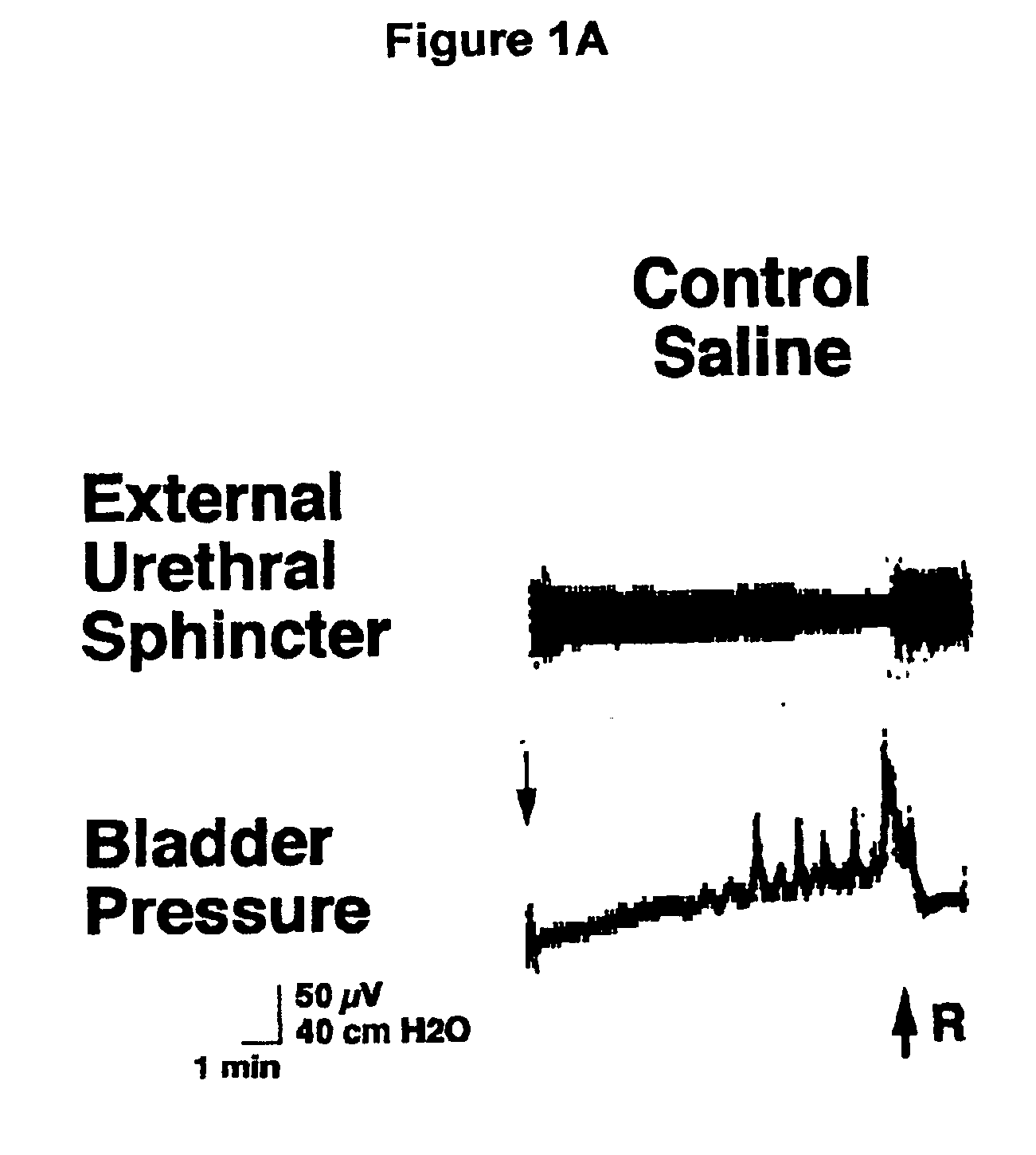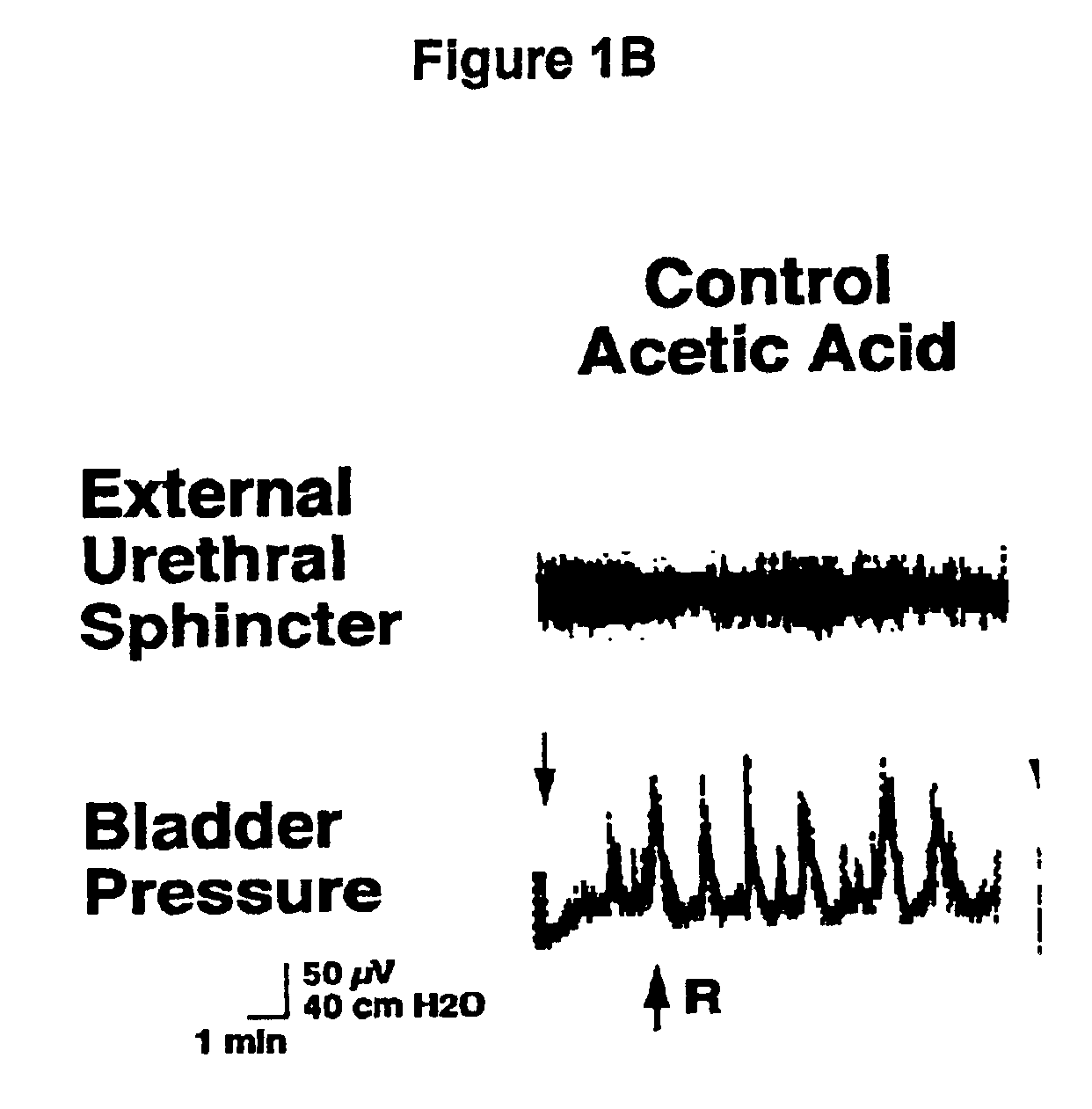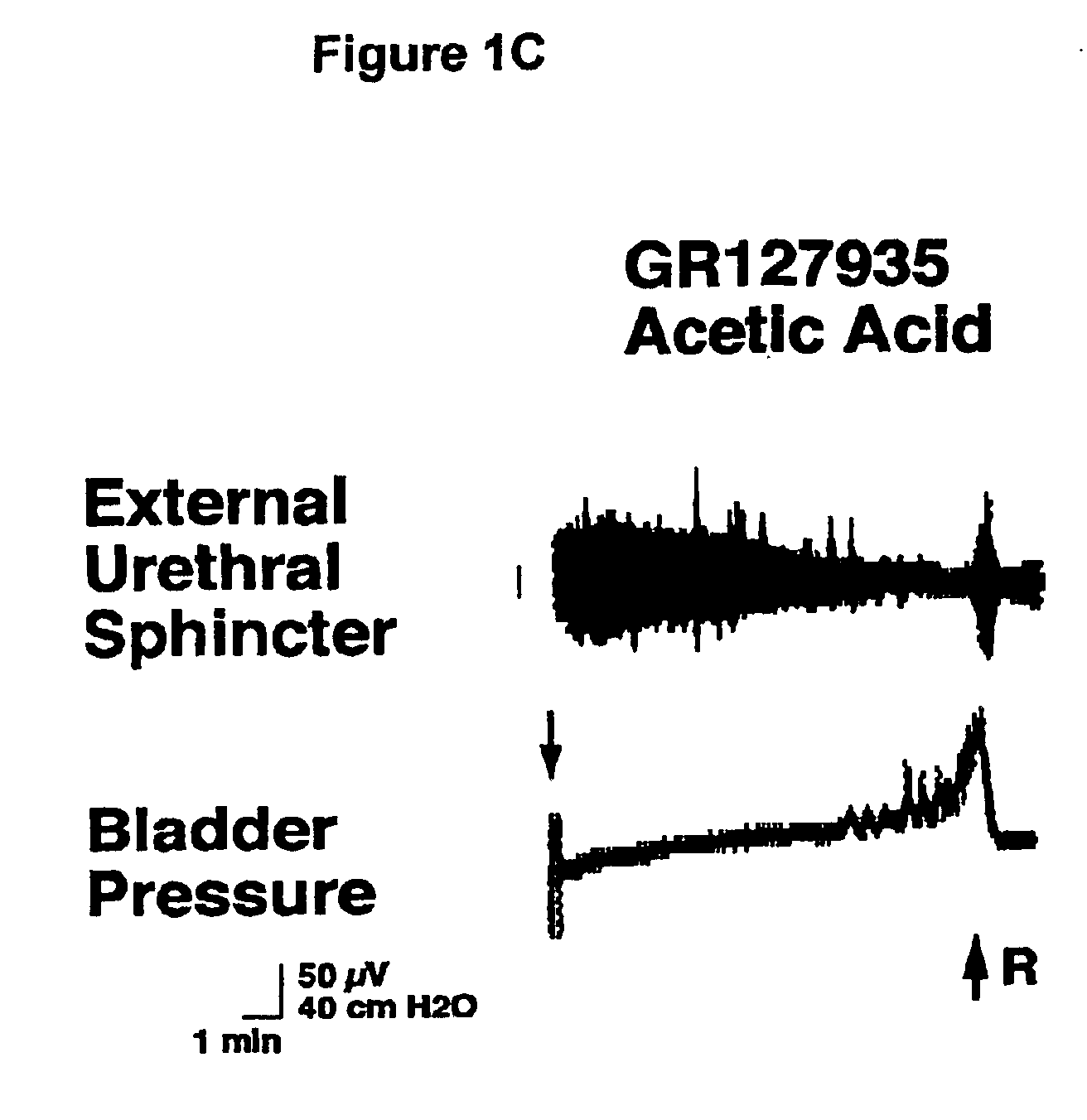1-(2-m-methanesulfonamidophenylethyl)-4-(m-trifluoromethylphenyl) piperazine and pharmaceutically acceptable salts and solvents thereof
a technology of trifluoromethylphenyl and methylphenyl, which is applied in the direction of organic chemistry, drug compositions, organic active ingredients, etc., can solve the problems of nocturnal enuresis, affecting significant numbers of both sexes, and confinement of older peopl
- Summary
- Abstract
- Description
- Claims
- Application Information
AI Technical Summary
Benefits of technology
Problems solved by technology
Method used
Image
Examples
example 1
Preparation of 1-(2-m-methanesulfonamidophenylethyl)-4-(m-trifluoromethylphenyl)piperazine oxalate
Scheme I, step A: 36.2 g (0.2 mole) of 3-Nitrophenylacetic acid (1) was stirred in 400 mL toluene at ambient temperature while 87.0 mL (1.0 mole) of Oxalyl chloride was added dropwise. After the addition was complete, the reaction was stirred for 1 hour at ambient temperature. The solution was slowly heated until an exothermic reaction occurred (approx. 56° C.). The external heat source was then removed until the reaction subsided. Continued heating at reflux temperature (approx. 95° C.) for 2 additional hours. Evaporation of the solution gave the acid chloride intermediate as a viscous oil. This crude intermediate was dissolved in 500 mL acetone and this solution added dropwise to a stirred mixture containing: 21.2 g (0.2 mole) Sodium carbonate, 46.0 g (0.2 mole) N-(α,α,α-trifluoro-m-tolyl) piperazine (2), 250 mL water and 250 mL acetone. The temperature was kept below 30° C. with occa...
example 1a
Preparation of 1-(2-m-methanesulfonamidophenylethyl)-4-(m-trifluoromethylphenyl)piperazine hydrochloride
1-(2-m-Methanesulfonamidophenylethyl)-4-(m-trifluoromethylphenyl)piperazine (99%, 9.09 g, 21.3 mmol) was dissolved in minimal anhydrous diethyl ether and treated with one equivalent of HCl (1 M in Et2O, 21.3 mL) and stirred. The resulting crude solid was taken to dryness under vacuum, then dissolved in minimal hot MeOH and allowed to slowly cool. The solution was further cooled to −10° C. before filtering. The filter cake was washed with ice-cold methanol and allowed to dry, yielding an off-white powder (5.50 g). The power was redissolved in minimal hot MeOH and allowed to cool to ambient temperature. The crystals were cooled to −10° C. and filtered. The filter cake was washed with cold MeOH and allowed to dry, yielding 1-(2-m-methanesulfonamidophenylethyl)-4-(m-trifluoromethylphenyl)piperazine hydrochloride (4.50 g, 45%): mp 198-199° C.; IR (KBr) 1606 cm−1; 1H NMR (d6-DMSO, 250 M...
PUM
| Property | Measurement | Unit |
|---|---|---|
| stress urinary incontinence | aaaaa | aaaaa |
| frequency | aaaaa | aaaaa |
| residual volume | aaaaa | aaaaa |
Abstract
Description
Claims
Application Information
 Login to View More
Login to View More - R&D
- Intellectual Property
- Life Sciences
- Materials
- Tech Scout
- Unparalleled Data Quality
- Higher Quality Content
- 60% Fewer Hallucinations
Browse by: Latest US Patents, China's latest patents, Technical Efficacy Thesaurus, Application Domain, Technology Topic, Popular Technical Reports.
© 2025 PatSnap. All rights reserved.Legal|Privacy policy|Modern Slavery Act Transparency Statement|Sitemap|About US| Contact US: help@patsnap.com



